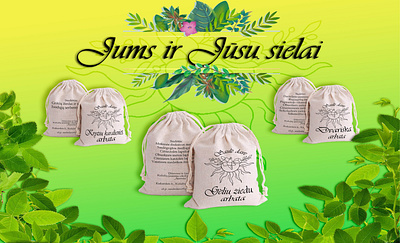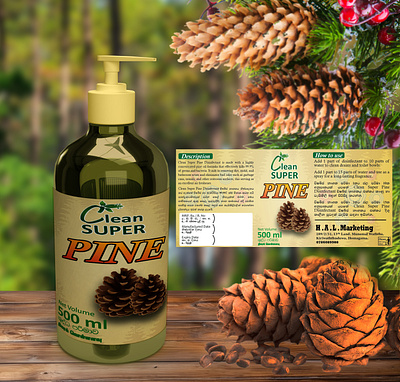Which application/end-user or product type may seek incremental growth prospects? AAV6 binding appears to be less affected by neuraminidase compared with AAV1 binding, suggesting that AAV6 may also bind to moieties other than sialic acid on the cell surface. If you adored this article and you would certainly like to receive additional details relating to sialic acid manufacturers kindly see our web page. These data suggest that sialic acid present on the cell surface is required for efficient AAV1 and AAV6 transduction. Taken together, these results show that both enzymatic removal and genetic removal of sialic acid on the cell surface reduce AAV1 and AAV6 binding and transduction. WGA, which binds to all linkage forms of sialic acid, blocked both AAV1 and AAV6 transduction on all the cells tested. We stained cell lines with lectins that have been used to recognize the following three different epitopes: (i) WGA recognizes all sialic acids, (ii) MAA recognizes α2,3 sialic acid, and (iii) SNA recognizes α2,6 sialic acid. Hydrolyzed bovine whey protein-based formulas were found to contain the highest amount of the most abundant human sialic acid, 5- N-acetylneuraminic acid (Neu5Ac). Aliquots were treated with 200 μg/ml proteinase K or mock treated for 1 h at 37°C. An equal volume of PBS containing 6% fetal bovine serum, 2 mM phenylmethylsulfonyl fluoride, and 2× concentrated protease inhibitor cocktail (Sigma) was added to inactivate proteinase K. After a 10-min incubation at room temperature, the cells were washed twice with medium and seeded at 5 × 104 cells/well in a 48-well plate.
 A printed slide was incubated with AAV1 capsids (at 200 μg/ml), and then a capsid monoclonal antibody (generated in collaboration with Colin Parrish) was overlaid on the bound capsids followed by a FITC-labeled secondary antibody (at 5 μg/ml). The cells were transduced with a constant amount of either AAV1 or AAV6 vector expressing luciferase in the presence of a 200-fold excess of AAV1, AAV6, or AAV2 as competitor. Transduction of cells by luciferase-expressing AAV1 or AAV6 vectors in the presence of competing λ phage DNA-containing AAV1, AAV6, or AAV2 vectors. These results again support the idea that sialic acid facilitates AAV1 and AAV6 transduction, in particular both α2,3 and α2,6 sialic acids. As shown in Fig. Fig.1,1, in both HepG2 and Pro-5 cells, rAAV1 vector transduction was inhibited not only by the AAV1 competitor but also by the AAV6 competitor (Fig. (Fig.1).1). We utilized a glycan array, available through the CFG, to screen a library of 264 different synthetic and natural glycans, which represent the carbohydrates commonly found on cell surfaces, to test the AAV1 capsid binding specificity. As a control, AAV2 transduction was not affected by lectin competition on all cell lines (data not shown). These data most likely reflect the difference between AAV1 and AAV6 interactions with sialic acid during the initial binding and cell entry steps.
A printed slide was incubated with AAV1 capsids (at 200 μg/ml), and then a capsid monoclonal antibody (generated in collaboration with Colin Parrish) was overlaid on the bound capsids followed by a FITC-labeled secondary antibody (at 5 μg/ml). The cells were transduced with a constant amount of either AAV1 or AAV6 vector expressing luciferase in the presence of a 200-fold excess of AAV1, AAV6, or AAV2 as competitor. Transduction of cells by luciferase-expressing AAV1 or AAV6 vectors in the presence of competing λ phage DNA-containing AAV1, AAV6, or AAV2 vectors. These results again support the idea that sialic acid facilitates AAV1 and AAV6 transduction, in particular both α2,3 and α2,6 sialic acids. As shown in Fig. Fig.1,1, in both HepG2 and Pro-5 cells, rAAV1 vector transduction was inhibited not only by the AAV1 competitor but also by the AAV6 competitor (Fig. (Fig.1).1). We utilized a glycan array, available through the CFG, to screen a library of 264 different synthetic and natural glycans, which represent the carbohydrates commonly found on cell surfaces, to test the AAV1 capsid binding specificity. As a control, AAV2 transduction was not affected by lectin competition on all cell lines (data not shown). These data most likely reflect the difference between AAV1 and AAV6 interactions with sialic acid during the initial binding and cell entry steps. Neuraminadase treatment of cells reduces AAV1 and AAV6 binding and transduction. Similar to the neuraminidase treatment experiment (Fig. (Fig.2D),2D), a larger amount of AAV6 bound to the Lec-2 cells compared to AAV1, consistent with its possible utilization of additional carbohydrates in binding to these cells. Transduction of CHO cells (Pro-5) and sialic acid-deficient CHO cells (Lec-2) with AAV1, AAV6, and AAV2. Cells were then washed with medium and transduced with 1 × 108 particles of rAAV for 1 h. As shown in Fig. Fig.3,3, AAV2 bound and transduced both the parental cell line (Pro-5) and the sialic acid-deficient mutant (Lec-2) with similar efficiencies. In contrast, AAV1 and AAV6 bound and transduced Lec-2 cells much less efficiently than Pro-5 cells. The AAV1 and AAV6 receptor is a glycoprotein rather than a glycolipid. Although the exact reason for this partial inhibition of AAV6 on Pro-5 cells with the AAV2 competitor is unknown, it is interesting that AAV6 binds heparin (17), and it is possible that the binding of the AAV2 competitor with heparan sulfate proteoglycan interferes with the binding of the AAV6 vector with its receptor on Pro-5 cells. Heparan sulfate proteoglycan is a primary receptor for AAV2 infection (42). It is not a receptor for AAV1, and AAV6 transduction is not blocked by heparin sulfate, despite the fact that the latter capsid binds to it (17, 31). Sialic acid is another abundant carbohydrate moiety on the cell surface, which is required for both AAV4 and AAV5 binding and transduction (19, 44). We observed that treatment of HepG2, Pro-5, or Cos-7 with the neuraminidase isolated from V. cholerae, which has a broad specificity and cleaves all α2,3, α2,6, and α2,8 sialic acids, did not reduce AAV2 transduction (Fig. 2A to C).
Neuraminadase treatment of cells reduces AAV1 and AAV6 binding and transduction. Similar to the neuraminidase treatment experiment (Fig. (Fig.2D),2D), a larger amount of AAV6 bound to the Lec-2 cells compared to AAV1, consistent with its possible utilization of additional carbohydrates in binding to these cells. Transduction of CHO cells (Pro-5) and sialic acid-deficient CHO cells (Lec-2) with AAV1, AAV6, and AAV2. Cells were then washed with medium and transduced with 1 × 108 particles of rAAV for 1 h. As shown in Fig. Fig.3,3, AAV2 bound and transduced both the parental cell line (Pro-5) and the sialic acid-deficient mutant (Lec-2) with similar efficiencies. In contrast, AAV1 and AAV6 bound and transduced Lec-2 cells much less efficiently than Pro-5 cells. The AAV1 and AAV6 receptor is a glycoprotein rather than a glycolipid. Although the exact reason for this partial inhibition of AAV6 on Pro-5 cells with the AAV2 competitor is unknown, it is interesting that AAV6 binds heparin (17), and it is possible that the binding of the AAV2 competitor with heparan sulfate proteoglycan interferes with the binding of the AAV6 vector with its receptor on Pro-5 cells. Heparan sulfate proteoglycan is a primary receptor for AAV2 infection (42). It is not a receptor for AAV1, and AAV6 transduction is not blocked by heparin sulfate, despite the fact that the latter capsid binds to it (17, 31). Sialic acid is another abundant carbohydrate moiety on the cell surface, which is required for both AAV4 and AAV5 binding and transduction (19, 44). We observed that treatment of HepG2, Pro-5, or Cos-7 with the neuraminidase isolated from V. cholerae, which has a broad specificity and cleaves all α2,3, α2,6, and α2,8 sialic acids, did not reduce AAV2 transduction (Fig. 2A to C).The N-linked inhibitor tunicamycin inhibited both AAV1 and AAV6 transduction; however, it also inhibited AAV2 and AAV4 transduction (Fig. (Fig.7B).7B). Previous studies have shown that AAV1 and AAV6 are almost identical serologically (14, 16). To test if these two viruses use the same receptor(s) for transduction, we carried out a competition assay on HepG2 and Pro-5 cells. However, binding to sialic acid seems to be the major determinant of AAV6 transduction, since about 98% inhibition of transduction was observed following neuraminidase treatment (Fig. (Fig.2B2B). There was a 12- or 98-fold decrease in AAV6 transduction following neuraminidase treatment on HepG2 and Pro5 cells, respectively, in contrast to a 5- or 37-fold decrease in AAV1 transduction on these two cell lines. Resialylation by α2,3(N)-sialyltransferase and α2,6(N)-sialyltransferase increased AAV6 transduction by 11-fold and 6-fold, respectively, but only 2.5-fold for AAV1. Therefore, Pro-5 cells and HepG2 cells display α2,3 sialic acid or α2,6 sialic acid on their surfaces, respectively, while Cos-7 cells display α2,3 sialic acid and a relatively small amount of α2,6 sialic acid. Lectin binding to HepG2, Cos-7, and Pro-5 cells.




